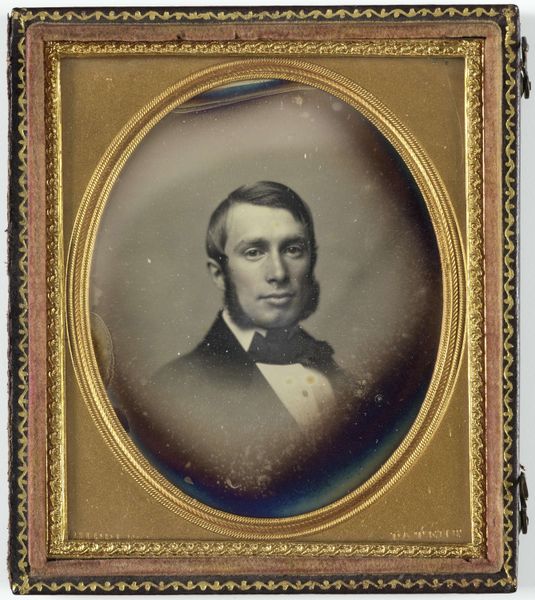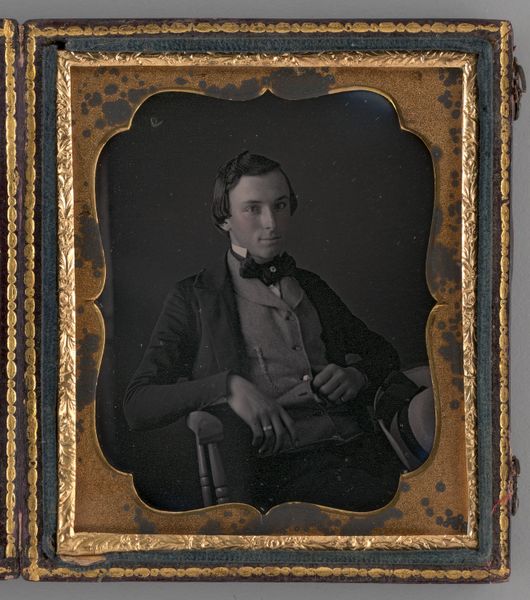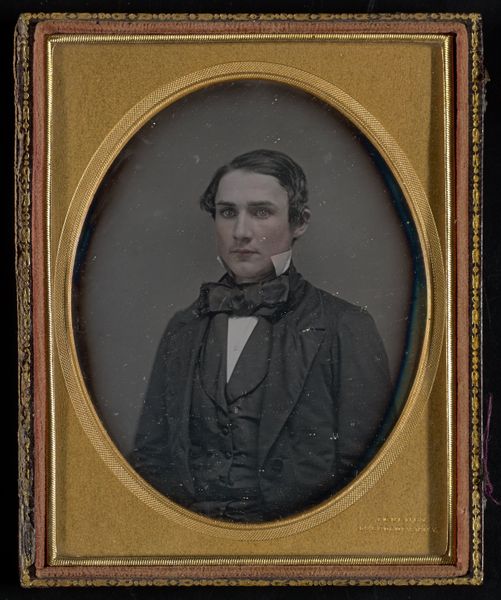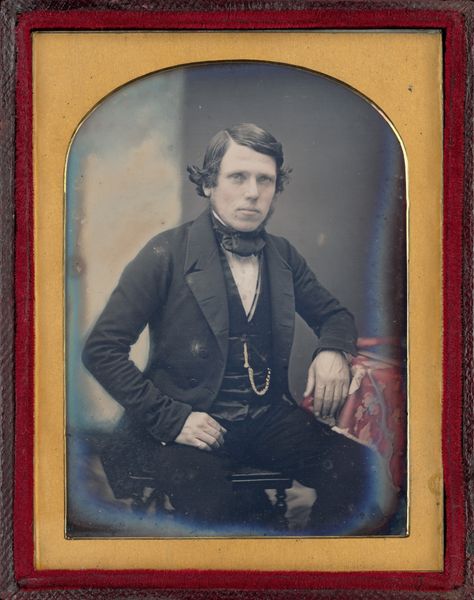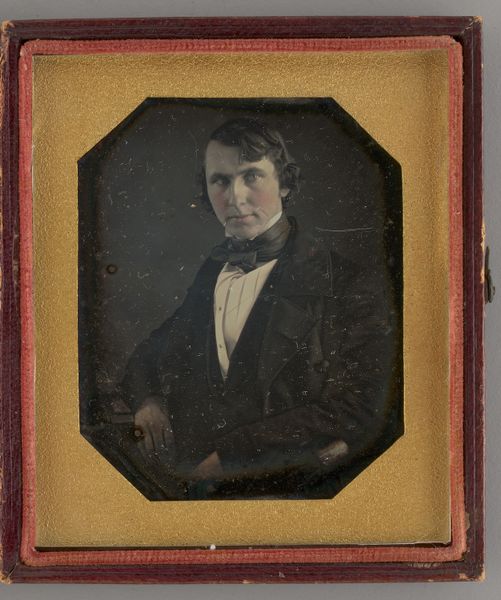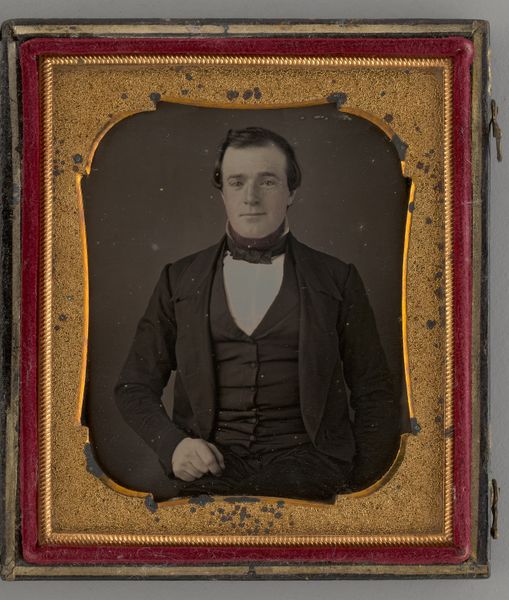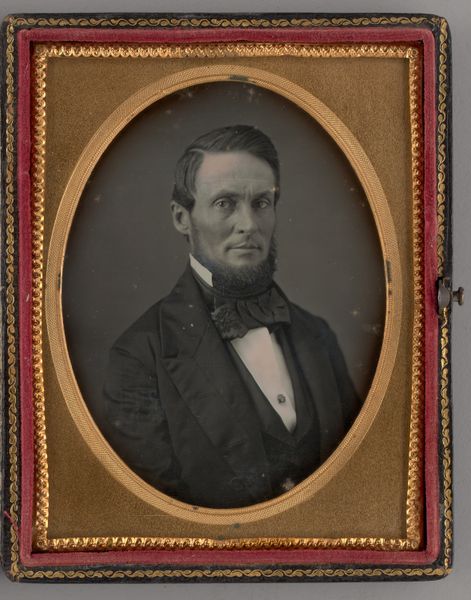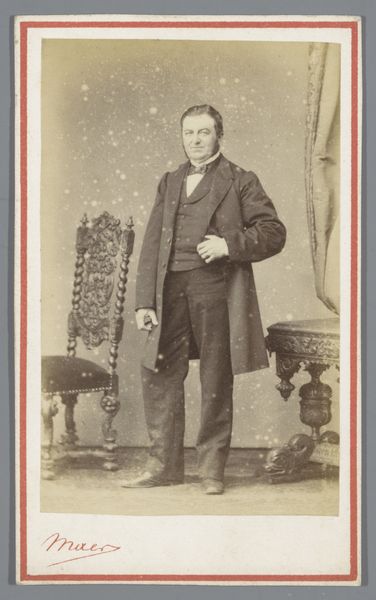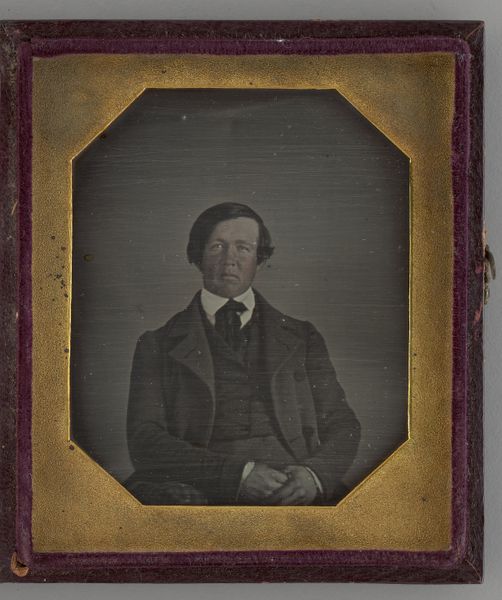
daguerreotype, photography
#
portrait
#
16_19th-century
#
daguerreotype
#
photography
#
united-states
#
realism
Dimensions: 21.7 × 16.5 cm (8 1/2 × 6 1/2 in., plate); 23 × 37.6 × 1.1 cm (open case); 23 × 18.8 × 2.1 cm (case)
Copyright: Public Domain
Editor: Here we have Rufus Anson's "Untitled (Portrait of a Seated Man)," a daguerreotype from 1855. It strikes me as so austere, almost melancholic. What can you tell me about this work? Curator: Well, the daguerreotype itself, as an early form of photography, speaks volumes about the democratizing effect of portraiture in the mid-19th century. Before this, portraits were largely the domain of the wealthy. Editor: That's a good point. This made having your likeness recorded more accessible, didn't it? Curator: Precisely. Consider the subject’s attire – the suit and tie. While not overtly ostentatious, it reflects a certain level of social aspiration. Editor: I see. So, is it fair to say that this image served a social function for the sitter? A kind of self-presentation? Curator: Absolutely. Early photography was often used to project a specific social standing. But consider also the institutional aspect: How did studios operate? How did this change our view of likeness and representation? Were Black citizens represented the same way as white citizens in daguerrotypes? What do the visual records look like in each instance? Editor: Those are some really interesting questions, and food for thought regarding social biases within art! Thank you. Curator: It's crucial to look beyond the immediate image and consider the broader socio-political implications of its production and reception. Editor: Definitely something I’ll consider from now on. I've learned to approach such art through different lens of cultural context.
Comments
No comments
Be the first to comment and join the conversation on the ultimate creative platform.
